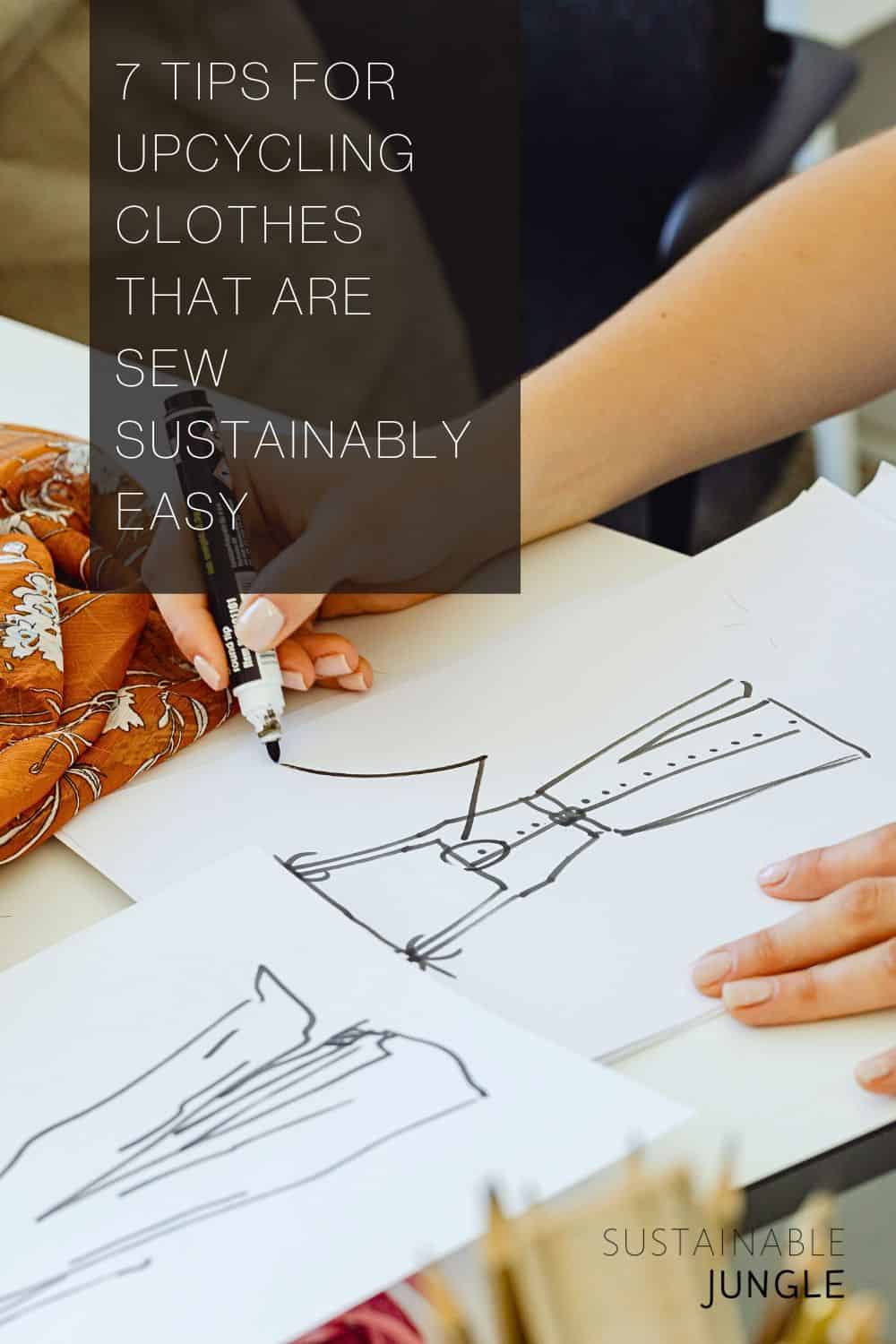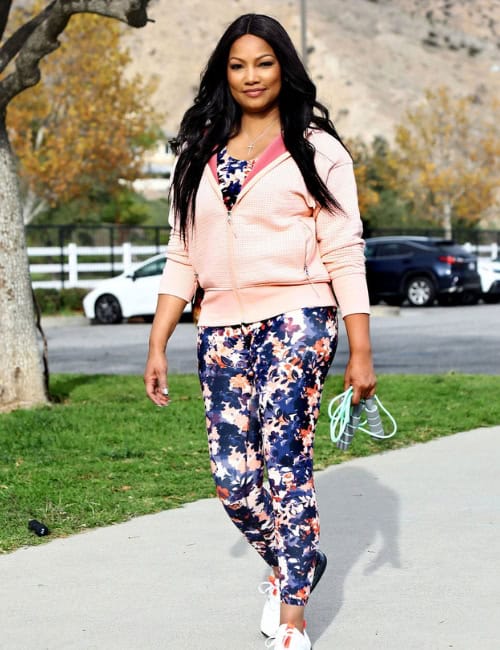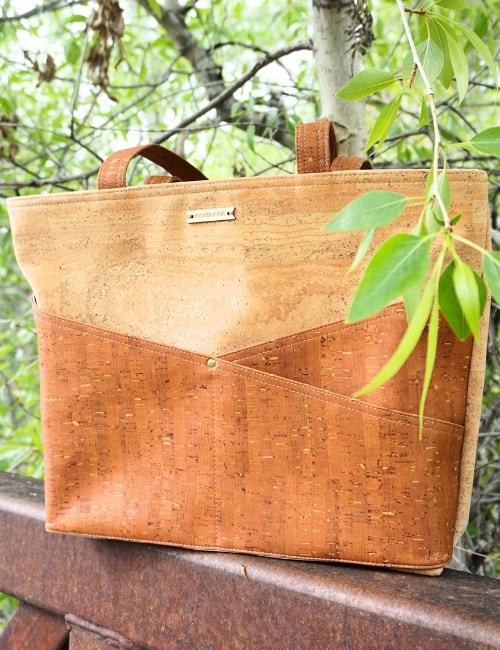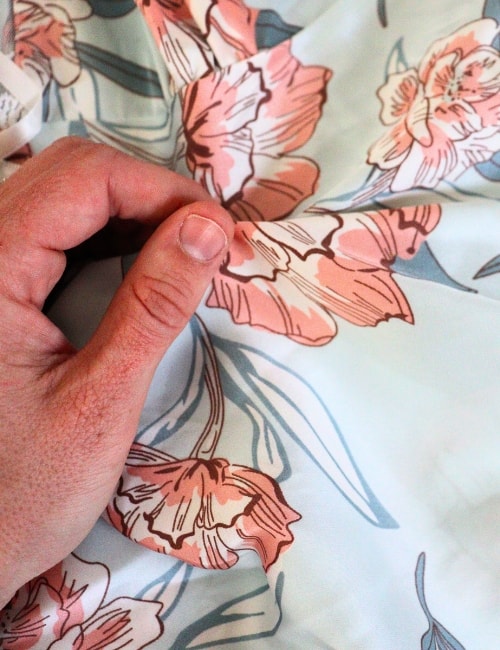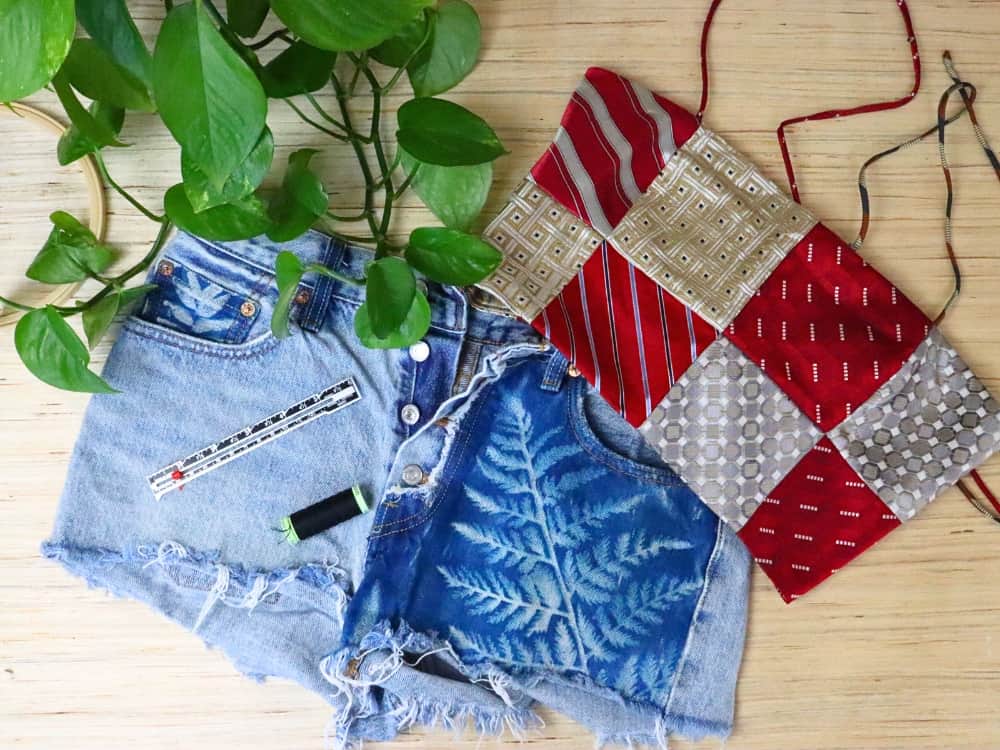
7 Tips For Upcycling Clothes That Are Sew Sustainably Easy
We love to see the creation of upcycled fashion brands embracing closet circularity and fighting back against the staggering 92 million tons of textile waste the fashion industry generates annually.
But putting a stop to textile waste doesn’t just mean buying new (to you)
By learning some simple tips and techniques for upcycling clothes, DIY style, you can breathe new life into the garments you already own—at a low cost to both you and the environment.
With our easy-to-follow tips, you can take your wardrobe from out-of-date to on-trend faster than you can say “circular economy”.
The Full List Of Tips For Upcycling Clothes For Beginners
- Essential Tools For Upcycling Old Clothes
- Learn Simple Repair Techniques
- Consider No-Sew Ways To Upcycle Clothes
- Understand Garment Design Elements
- Begin With Items Suited For Simple Upcycling
- Get Creative With Your Clothes Upcycling Ideas
- Go Beyond Making Upcycled Clothes
- More Resources For Upcycling Vintage Clothing
1. Essential Tools For Upcycling Old Clothes
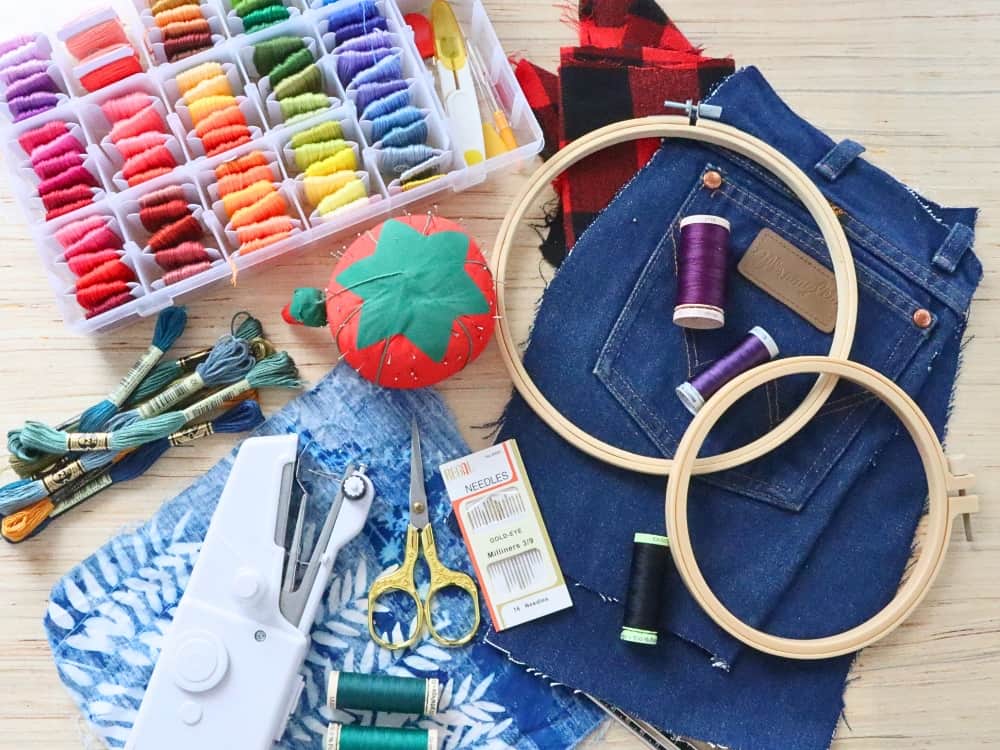
Before you dive into the world of upcycled clothing, make sure you have the proper tools—though don’t make the mistake of thinking they need to be extravagant.
A basic sewing machine is often helpful for expediting and streamlining your sewing process, but if you don’t mind spending a little extra time doing things by hand, even that’s not necessary.
Transforming wardrobes through upcycling doesn’t require complexity or advanced skills.
In fact, a simple pair of scissors might be all you need.
Here are the most basic fundamental supplies you’ll likely need for repurposing and upcycling clothes:
- Basic sewing kit with needles and various colors of thread or embroidery floss
- Sharp fabric scissors for clean cuts
- Pins and rulers for precision work
- Flexible measuring tape for accurate sizing
- Marking tools (like heat erasable pens) to outline alterations and detailed decoration
- Seam ripper for undoing mistakes
- Embroidery hoop for keeping isolated rework areas under tension
If you want to upcycle old clothing by adding detailed embroidery, consider keeping water soluble paper on hand on which you can either first print or draw your designs as a guide.
While not always necessary, it’s never a bad idea to keep an assortment of fabric scraps, hardwear (like buttons and zippers), and embellishments like lace on hand, too.
But rather than purchasing these new, consider repurposing materials from previously owned clothing or exploring your local thrift store’s craft section for second-hand embellishments.
Or do as we do and just get in the habit of saving these little odds-and-ends whenever you can. Did your new blouse come with spare buttons?
Put them in a jar in case you need them later, either for that blouse or another project.
Don’t forget to save leftover fabric scraps from projects; they may become useful for future ones.
2. Learn Simple Repair Techniques
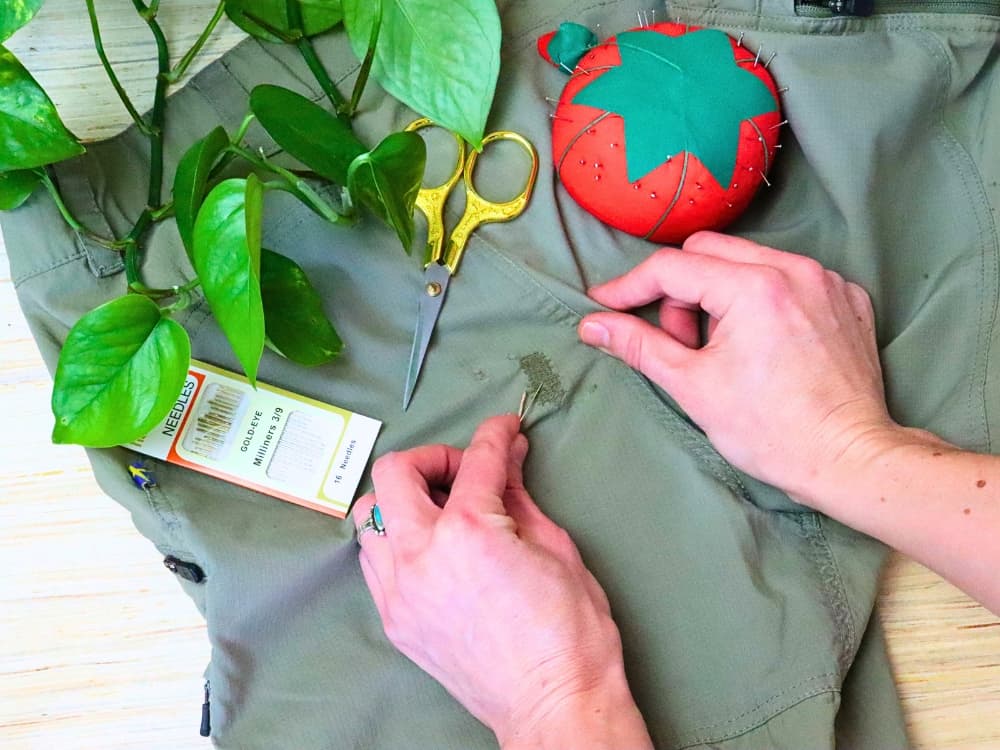
You don’t need to aim for perfection or complex reconstructions right away.
Taking the first step in upcycled sewing can be as simple as repairing well-worn garments—like patching jeans and darning old socks.
Start by learning basic hand stitches that will come in handy (get it?) for many upcycling endeavors, such as the backstitch, running stitch, stem stitch, stretch stitch, whip stitch, and blanket stitch.
Once you know these, you can learn the following essential skills, which serve as a stepping stone to refreshing and reimagining your wardrobe:
- Hemming
- Button sewing
- Patchwork
- Darning (you combine the running stitch with weaving here)
Remember, practice is key to improving your sewing skills. Start by practicing on pieces of scrap fabric or with small projects, like a simple pillowcase or a basic tote bag.
As you gain confidence, you can gradually tackle more complex projects.
3. Consider No-Sew Ways To Upcycle Clothes
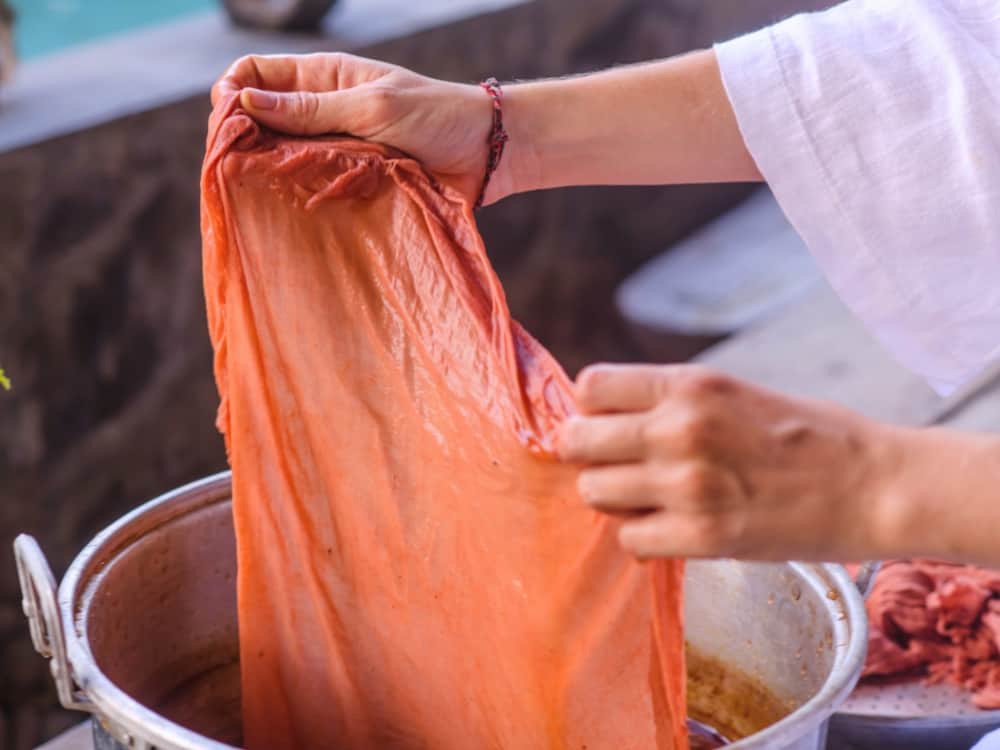
While we highly recommend learning some simple sewing methods to accomplish some of the most common and basic repairs, revitalizing your wardrobe does not always require sewing.
These no-sew techniques offer simple solutions to breathe new life into upcycled clothing:
- Fabric Glue Repairs: Close up tears or attach enhancements without a stitch by using fabric glue. Attach decorative elements such as rhinestone studs or a piece of elegant lace.
- Iron-On Patches: Elevate a basic pair of jeans or cover up worn areas on sweaters with colorful or quirky iron-on patches.
- DIY Dye: Got stains or tired of the old color? Mix and apply fabric dye to create eye-catching patterns. We recommend using sustainable dyes or even creating your own using simple natural ingredients you can grow in your own sustainable garden (like onion peels, beets, and flowers like Celosia).
- Alternative Fabric Printing: Experiment with cyanotype printing for a unique design on your newly created pieces.
- Shorts from Jeans: Transform your old jeans into trendy shorts with just a few snips. For a polished edge, apply no-sew hemming tape.
- Tie It Off: Turn t-shirts or old sheets into totes and more simply by cutting fringes in the edge and tying them together.
4. Understand Garment Design Elements
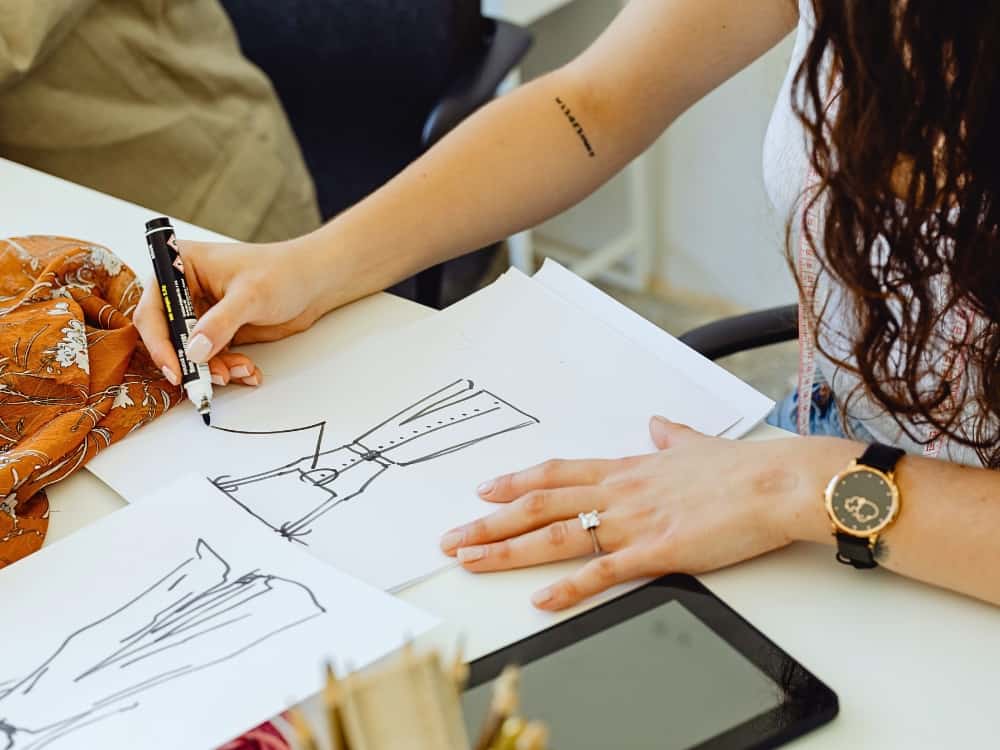
Beyond simple repairs and alterations, figuring out how to upcycle clothes often requires you to understand a bit about how they were originally designed.
By closely examining the components—embroidery, pockets, zippers, patterns, buttons, and clasps—an individual can look beyond the garment’s present form.
Recognizing clothing as mutable rather than a static piece allows for endless creative possibilities, unconstrained by the current design.
Furthermore, limitations in fabric can be overcome by ingeniously fusing materials from multiple clothing items.
Begin by evaluating the existing condition and potential of each clothing item to determine which pieces offer a solid foundation for transformation—and which ones would be better suited as becoming scrap material.
5. Begin With Items Suited For Simple Upcycling
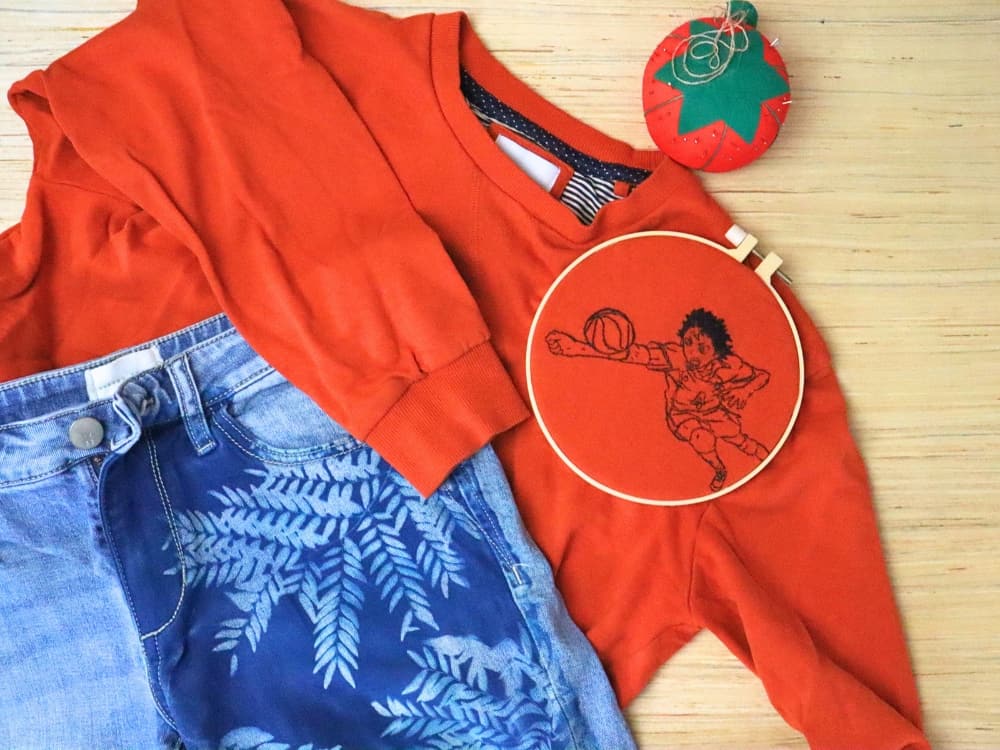
When starting to upcycle old clothing, it’s best to select items that are less complex to transform.
Fabrics like cotton and flannel are top choices due to their ease of handling compared to more intricate materials like chiffon.
Cotton t-shirts, sweatshirts, dresses with simple silhouettes, and old jeans serve as good starting points.
Keep in mind that early attempts still might not be flawless, but they reflect progress.
If you’re worried about ruining your own clothes, especially if they have some sentimental reason driving your desire to keep them around, start by trying to upcycle thrift store clothing.
Grab items on deep discount (this usually means they’ve been in the store longest and may soon be discarded or sent away to textile recyclers) and start experimenting.
6. Get Creative With Your Clothes Upcycling Ideas
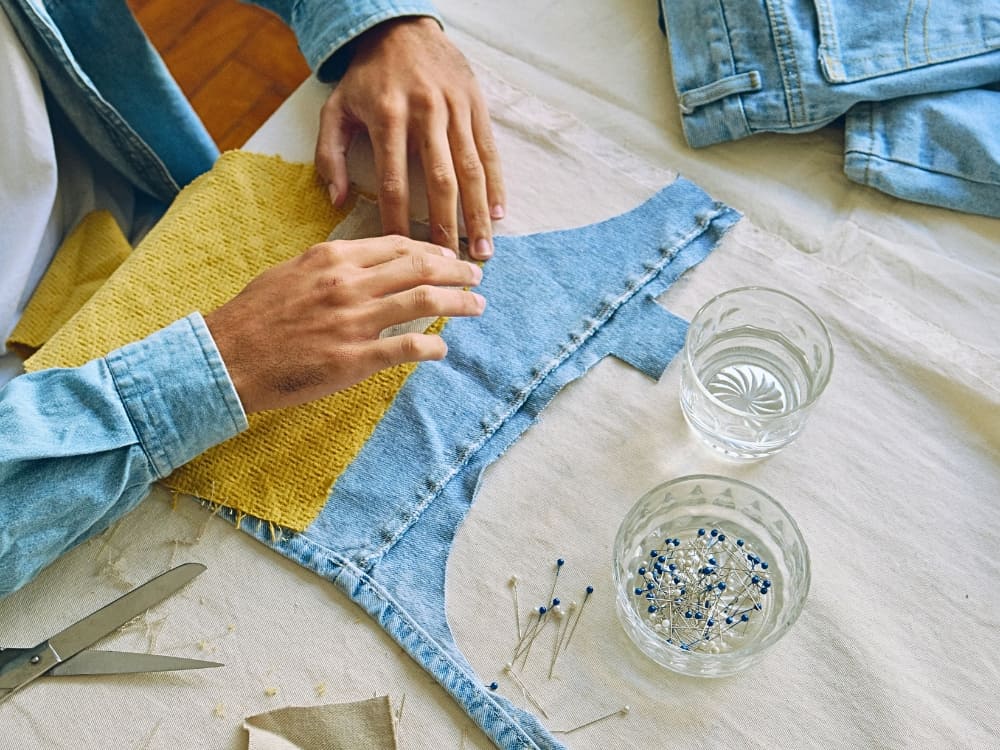
Once you start feeling confident with the basics, let your creativity flow (er, sew) by branching out to more complex upcycled clothing ideas.
Consider each item as a blank canvas for your imagination, to which no rules apply.
For instance, don’t be afraid to play with shapes and forms.
Altering the structure of pre-loved apparel can greatly refresh its appearance. Shortening or extending the hem of garments of, say, an upcycled dress can transform a maxi into a chic midi or trendy mini.
Sleeves offer further options: removing them for a breezy summer look, or attaching new ones to craft an entirely distinct silhouette.
You can even modify old wedding dresses, which are typically a one-time wear, into unique pieces like adorned denim or trendy corset tops. They can also be dyed for a complete color change.
If you’re looking for unique upcycling ideas for clothing, Pinterest is a fabulous resource teeming with upcycling inspiration.
Just keep your own style preferences and comfort in mind when designing and ask yourself: will I actually wear this?
There’s no sense in using upcycling to prevent fabric waste if the upcycled clothes themselves never get worn.
7. Go Beyond Making Upcycled Clothing
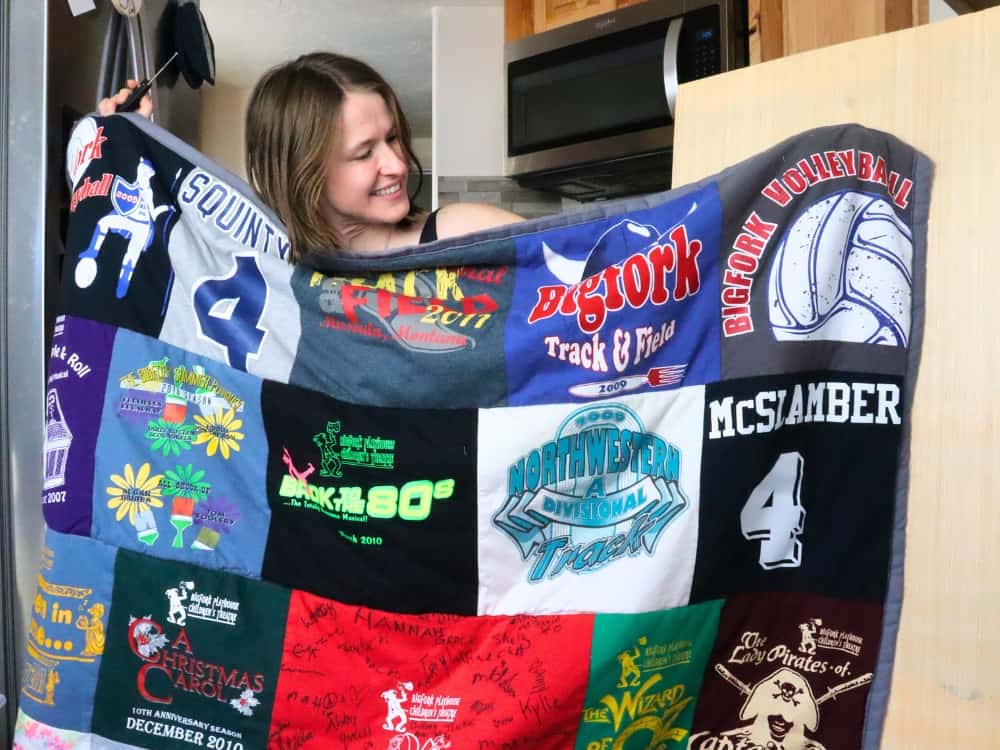
Just because upcycling is our favorite answer for what to do with old clothes, doesn’t mean you can only make clothes using it.
When you view clothing as just another textile, new upcycling opportunities arise.
Not every piece of clothing can be restored to its former glory, but their materials can have a second life in various forms:
- Quilts: Assemble a cozy patchwork quilt using fabric from old clothes. For instance, we transformed all the sentimental t-shirts we collected throughout high school and college into a memory quilt.
- Tote Bags & Accessories: Create practical tote bags from an old t-shirt, cushion covers from graphic tees, or kitchen aprons from old bedding.
- Fabric Gift Wrap: Transform generous swaths of fabric from shirts or dresses into reusable zero waste gift wrapping for presents.
- Small Utilities: Fashion handkerchiefs, scrunchies, or cleaning rags from less sizable fabric remnants.
- Pet Toys: Take sturdy materials like denim and canvas and use them to create eco-friendly dog toys. Just be mindful that your pup may end up ingesting these materials, so make sure they’re natural and non-toxic.
8. More Resources For Upcycling Vintage Clothing
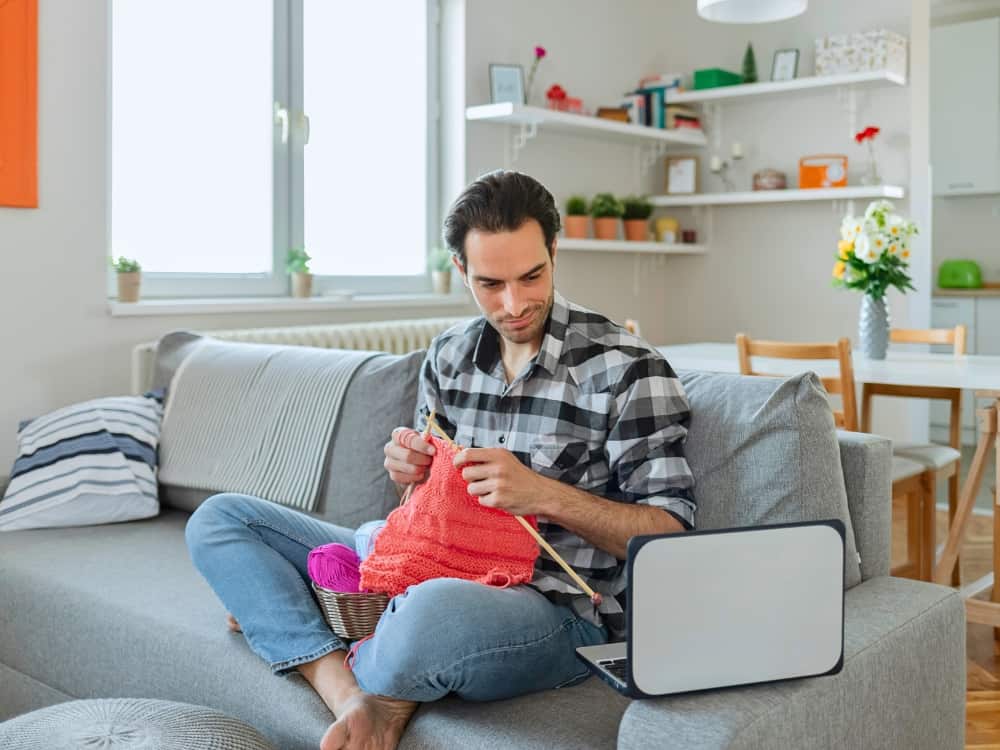
Becoming skilled at refreshing old garments can be easily achieved with the plethora of resources available:
- YouTube: There are thousands of YouTube channels dedicated to sewing and reworking clothes. Fashion Wanderer is one of our favorites, but be sure to check out some more of the best upcycling channels.
- Social Media: Dare we say it, but with thrift flips trending among young people, TikTok and Instagram are excellent resources for upcycling tips, tidbits, and tutorials.
- Pinterest: Start your search for upcycling clothes ideas on Pinterest. From plain inspiration to helpful infographics, you’ll easily get sucked down the rabbit hole of rework ideas.
Of course, some repairs and rework ideas might go beyond your own skill level.
For challenging pieces, consider consulting a local tailor or online clothing alteration services.
Did you know we Have a Newsletter?
We cover the latest in sustainable living, fashion, zero waste, beauty, travel, finance and more…
Why Learn How To Upcycle Clothing?
Reducing the 80% of discarded clothes that end up in landfills is obviously the biggest reason to dive into the realm of reworking garments, but there are numerous other upcycling clothes benefits.
First, upcycling offers a cost-effective means of revamping one’s wardrobe. Instead of investing in new clothing items, one can rejuvenate their existing garments for a fraction of the cost.
It also reduces the demand for new clothing production, which alone has a huge environmental impact.
Not only is the textile industry responsible for 10% of global emissions, but it’s also notorious for its water consumption.
Creating a single t-shirt can require up to 2,700 liters of water—equivalent to a person’s drinking needs for over two years.
And let’s not underestimate the personal benefits of an exercise in creativity. By repurposing clothing, we not only embrace sustainable practices but also get the fun opportunity to craft unique, personalized apparel.
Final Thoughts On Upcycling In Fashion
Both an art and a means of reducing waste, upcycling old clothing isn’t just about conservation.
It’s about creating a new perspective on the lifespan of clothing—something our heavily fast fashion influenced culture desperately needs.
Contrary to fast fashion’s cheap throw-away model, upcycled fashion is a deliberate approach that values existing resources and resourcefulness, proving that with a bit of effort, the life of clothing can be multiplied manifold.
Best of all, upcycling clothing is an accessible activity for all skill levels.
Whether one is adept with a sewing machine or prefers no-sew methods, there are numerous ways to transform old clothes into fresh, fashionable, and functional items.
So next time you hear someone complaining about their warn-out wardrobe and planning a shopping spree, drop this article in the DMs to help up(cycle) their sustainable fashion game.
Pin these:

